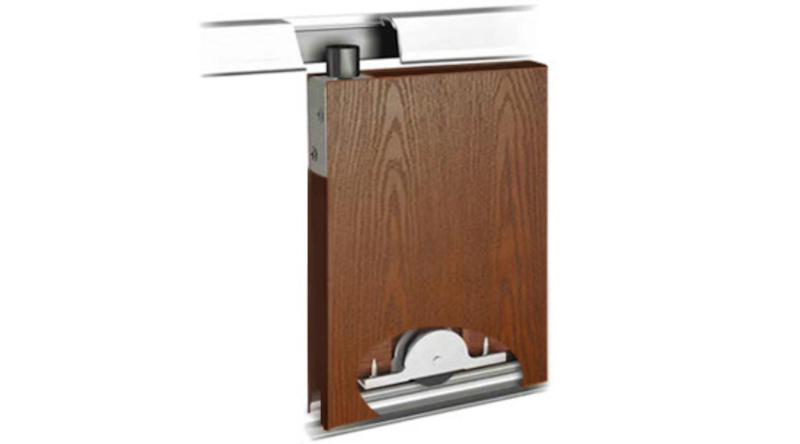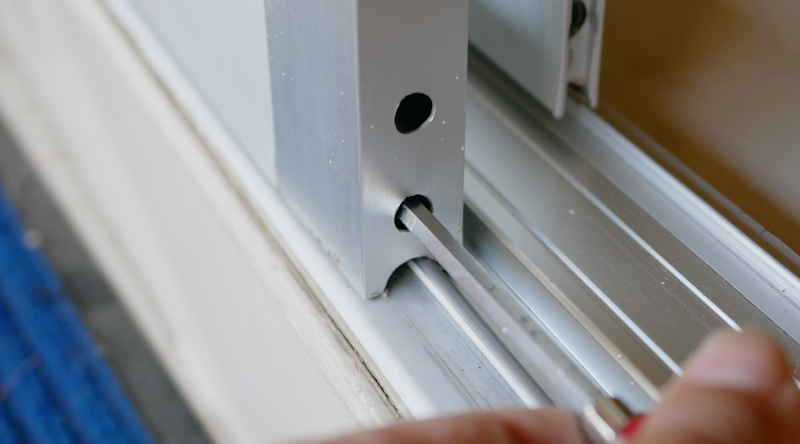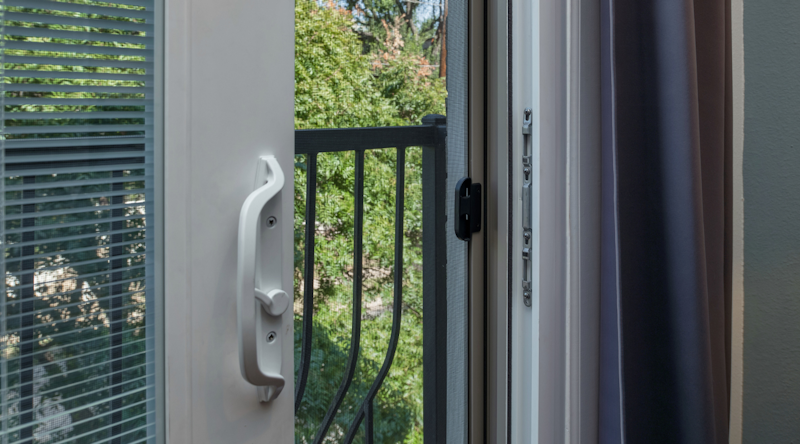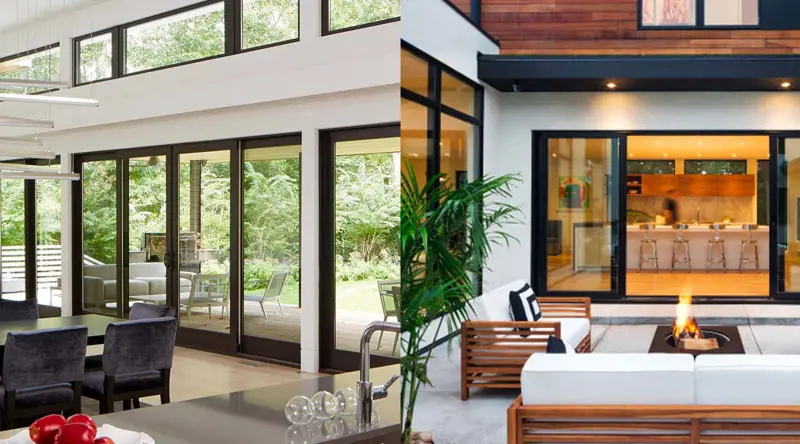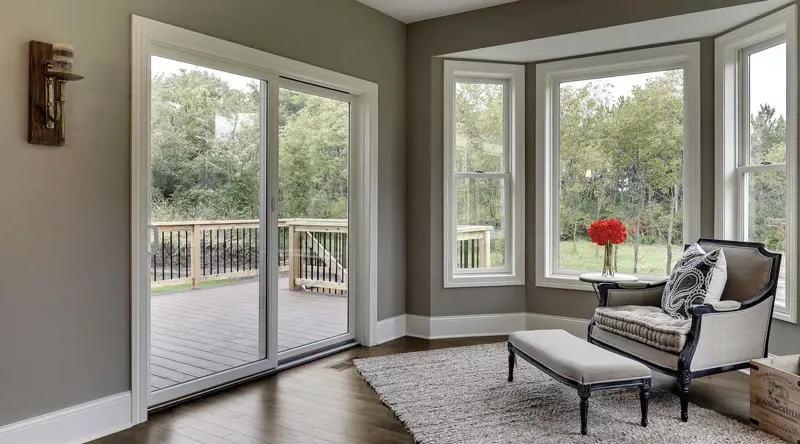
How to adjust a sliding patio door
Have you been experiencing trouble opening your sliding patio doors lately? Don't worry; in this post, we share instructions on adjusting a patio sliding door. But first, when is the right time to adjust the sliding doors on your patios?
Signs your door needs an adjustment
Sometimes it may be hard to know whether your sliding patio door is functioning at its best. Below are some signs your sliding door needs adjustment:
- The door is not opening or closing properly
- The sliding door is making a strange sound
- The door is going off the track
The door is not opening or closing properly
Sliding patio doors in good working order should slide smoothly along the rails.
The sliding door is making a strange sound
Friction between the bottom surface of your door and the track could lead to an unfamiliar sound, which may signal a misaligned door.
The door is going off the track
The door needs to move uniformly from one end to another. If the door gets off the track, you will experience problems opening and closing it. You'll need to adjust the track or rollers to resolve the issue.
Now you know some signs of when your sliding patio door needs an adjustment. But why is an adjustment required for your door; what caused the problem?

What causes the door to become misaligned?
When your sliding door is misaligned, it tends to stick.
The biggest cause of misalignment is simple wear and tear. The more the door is used, the more likely it is to become misaligned. That doesn't mean you shouldn't use the door; that's what the door is there for, right? Use the door. Just be careful; avoid using too much force when opening or closing the door.
Again, misalignments can cause doors to become sticky; in other words, the door becomes difficult to open. The more we use the door in this condition, the worse it can get.
Sliding doors are equipped with rollers that help the door slide along the track. The rollers and tracks are usually the pain points with misalignment issues. Excessive force or misuse of the door can cause damage to both the rollers and the track. A quick takeaway is to regularly service your sliding patio doors to check for minor issues and adjust your patio door early. In this next section, let's look at the different door adjustments.
Simple types of patio door adjustments
If your door starts becoming sticky, it will require the correct adjustment to address the issue. Some significant adjustments for a sliding patio door include the roller adjustment, latch adjustments, and strike adjustments. In this next section, talk about how it's done.
How to adjust patio door rollers
Rollers will be at the bottom of your door and in direct contact with the track of your sliding door. In this case, adjusting the rollers refers to cleaning or replacing the rollers. Adjusting the height of the rollers is addressed in the next section, How to adjust patio door alignment.
How to clean patio door rollers
- Begin the cleaning process by removing the active door panel from the jamb.
- Lay the door down on a flat surface and access the adjustment screws. Use a screwdriver and turn the adjustment screw clockwise until the rollers release from the bottom of the door.
- Clean the rollers with a brush and try to vacuum the space for the rollers.
- Next, install the cleaned rollers into place using the adjustment screws.
- Optional: If the rollers are in poor condition, replace them. You can either contact the manufacturer for the exact replacement or try to purchase a replacement at your local hardware store.
- Clean the track thoroughly before reinstalling the door into the jamb.
If the door is still sticking and the track is clean, you may need to adjust the door alignment. This process involves changes to the door placement with the adjustment screws, the same ones you used to remove the rollers from the door.
How to adjust the patio door alignment
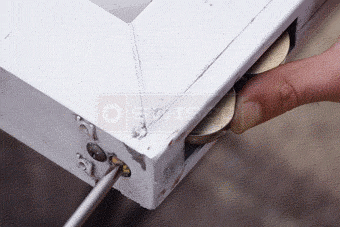
Patio doors occasionally need to be realigned. That's especially true if you live in an area like North Texas, where our foundations shift and cause our windows and doors to go out of square. When the door is misaligned, you'll see that the gap between the panel and the door is different at the top and bottom of the door panel. You'll need to raise or lower the panel using the built-in adjustment screws to fix it. To do this, follow the instructions below.
- Locate the adjustment screws at the bottom of the door; usually, they are on the jamb side, and some manufacturers cover screw holes with plastic plugs.
- Each screw controls a roller; adjust the roller to create an even-spaced gap around the sides and bottom of the door panel.
Sometimes adjustments to the door alignment cause misalignment with the door latch. Instructions on adjusting the door latch are listed below.
How to adjust a patio door latch
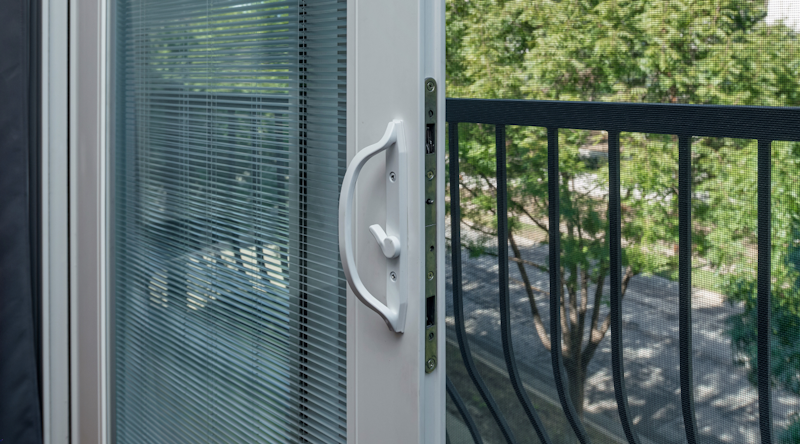
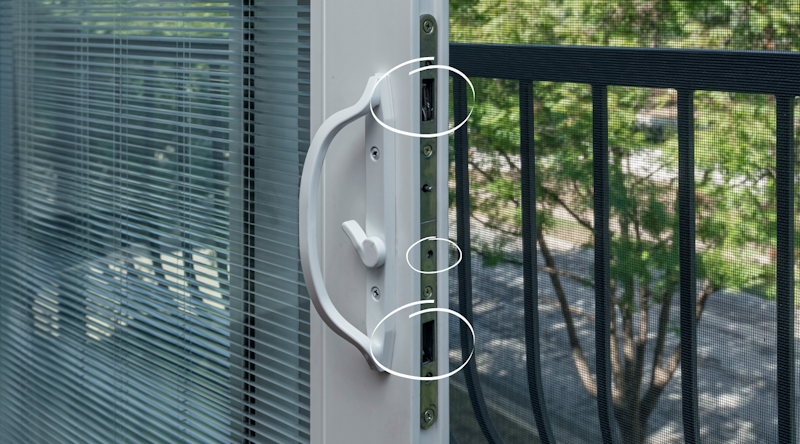
The frequent opening and closing of your patio door latch may result in a slight change in the position of the latch, which may be high or lower than its original position. In order to lock correctly, the door latch must align with the door strike. For clarity, the latch is on the door panel, and the strike is on the jamb.
To adjust a patio door latch↗, here's what to do.
- Begin with an open door so you can see the latch mechanism inside the door.
- Activate the locking mechanism to expose the door latch. Doing this will allow you to see the adjustments you will make.
- You should see an adjustment screw above the latch. Use a flat-head screwdriver to rotate the screw. This adjustment screw will increase or decrease the length of the latch hook so it can catch appropriately at the strike plate.
If the latch has no problem, but the door won't lock, then the strike is the culprit.
How to adjust a patio door strike

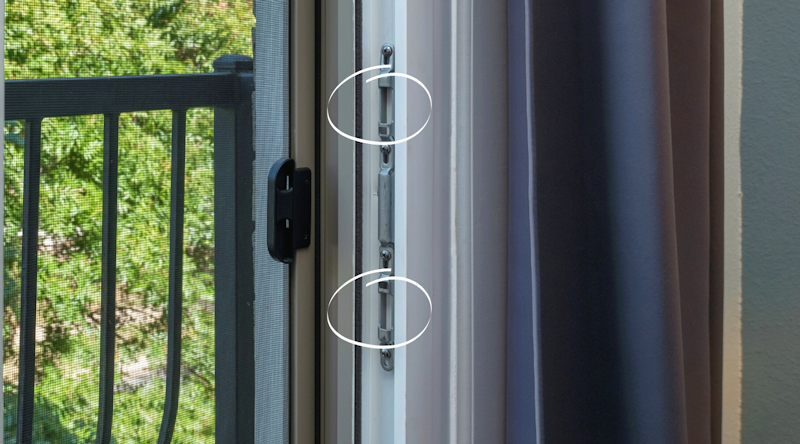
A door strike requires a similar approach as the latch does when adjusting. The strike is the opening into which the latch locks. To modify a patio door strike↗, follow the instructions below.
- First, open your sliding door and locate the strike plate. It's helpful to have the latch hooks visible while you adjust the strike plate.
- The strike plate should have one or more receiving holes for the latch hooks.
- Loosen the keeper screws so that you can push the plate up or down to align with the latch hooks.
- Tighten the screws with the strike plate in its new position.
- Finally, test the lock and readjust as needed.
That's it. The sliding door should close smoothly.
Conclusion
Sliding patio doors are easy to adjust. You may sometimes need a partner to assist you, but the process is easy to follow. Begin by adjusting the rollers and door panel heights, then move on to latch and strike adjustments if needed. Remember, the most significant cause of sliding door problems is wear and tear; the kinder you are to your door, the longer it will last.
Oops!
We don't currently serve your area but do want to help you plan your project. Try our Build & Price tool to get an idea of window & door costs within DFW. Your area may be higher or lower but at least you'll have some idea of the price.
Thanks for stopping by.




